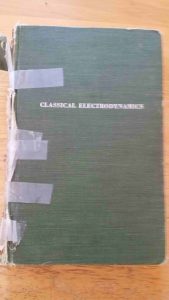
I add four notebooks treating topics in J. D. Jackson’s Classical Electrodynamics, the textbook from which I learned electricity and magnetism. This is a notoriously difficult text that has caused pain for generations of physics graduate students. Frankly, modern texts provide a better introduction to the subject (read the Amazon reviews on Jackson). But, if you do the math in Jackson and solve the problems, you will have developed a repertoire of technical skills that will serve you well as a theoretical physicist.
I enjoyed reviewing Jackson and working through some of the examples in detail. It took more time than I expected and made me realize I just skimmed the surface when I was a student facing the pressure of other classes. My second objective in generating these notebooks was to make use of my experience with Mathematica to perform as many of the derivations and calculations as possible using symbolic manipulation. This also was more difficult than I expected. The standard physics notation for electrodynamics is intricate and highly decorated and effort must be expended to approximate it. One must also manipulate expressions involving multiple integrals and summations and control the order of their evaluation. Numerical methods must be developed for testing approximate analytical results. Just the development of relevant visualizations is nontrivial.
I cover only a small fraction of the subject material in Jackson. I focus on electrostatic problems (first three chapters of Jackson) and limit my consideration to derivations and examples involving spherical symmetry. There is MUCH more I could do. I plan to add more notebooks as time permits.